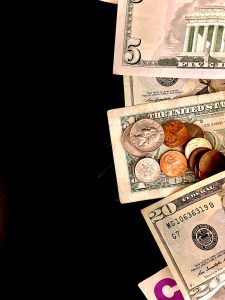Forex trading is a lucrative business, and many people are attracted to it because of its potential to generate significant returns in a short period. However, not all forex pairs are created equal, and traders must be aware of the spreads associated with each pair they trade. A spread is the difference between the buying and selling prices of a currency pair, and it represents the cost of trading that particular pair. High spreads can significantly reduce a trader’s profit margins, making it essential to avoid pairs with high spreads. In this article, we will discuss the forex pairs to avoid due to their spread.
Firstly, it is important to understand that spreads vary from one broker to another, and they can also fluctuate depending on market conditions. Therefore, it is advisable to compare the spreads of different brokers before choosing one to trade with. The spread is usually expressed in pips, which is the smallest unit of price change in a currency pair. The higher the spread, the more expensive it is to trade that particular pair.
The first forex pair to avoid due to its spread is the exotic currency pair. Exotic pairs are currency pairs that involve a major currency and a currency from a developing country. Examples of exotic pairs include USD/TRY (US Dollar/Turkish Lira), USD/ZAR (US Dollar/South African Rand), and USD/MXN (US Dollar/Mexican Peso). Exotic pairs are known for their high volatility, which makes them attractive to some traders. However, this volatility also translates to high spreads, which can be as high as 50 pips or more. Therefore, traders should avoid exotic pairs unless they have a specific reason to trade them.
The second forex pair to avoid due to its spread is the cross-currency pair. Cross-currency pairs are currency pairs that do not involve the US Dollar. Examples of cross-currency pairs include EUR/GBP (Euro/British Pound), EUR/JPY (Euro/Japanese Yen), and GBP/JPY (British Pound/Japanese Yen). Cross-currency pairs are less liquid than major currency pairs, which means they have wider bid-ask spreads. The bid-ask spread is the difference between the highest price a buyer is willing to pay for a currency pair (bid) and the lowest price a seller is willing to accept (ask). The wider the spread, the more expensive it is to trade that particular pair.
The third forex pair to avoid due to its spread is the minor currency pair. Minor pairs are currency pairs that involve a major currency and a currency from a smaller economy. Examples of minor pairs include AUD/NZD (Australian Dollar/New Zealand Dollar), CAD/CHF (Canadian Dollar/Swiss Franc), and GBP/AUD (British Pound/Australian Dollar). Minor pairs are less liquid than major pairs, which means they have wider spreads. In addition, minor pairs are subject to higher volatility than major pairs, which can make them more expensive to trade.
Finally, traders should avoid trading currency pairs during periods of low market liquidity. Low liquidity periods occur when there are few market participants, which can result in wider bid-ask spreads. Examples of low liquidity periods include weekends, holidays, and major economic releases. During these periods, traders should avoid trading currency pairs that have high spreads, as this can result in significant trading costs.
In conclusion, forex traders should be aware of the spreads associated with each currency pair they trade. High spreads can significantly reduce a trader’s profit margins, making it essential to avoid pairs with high spreads. Exotic, cross-currency, and minor currency pairs are examples of forex pairs to avoid due to their spread. Traders should also avoid trading currency pairs during periods of low market liquidity. By avoiding high spread currency pairs, traders can improve their chances of success in the forex market.






